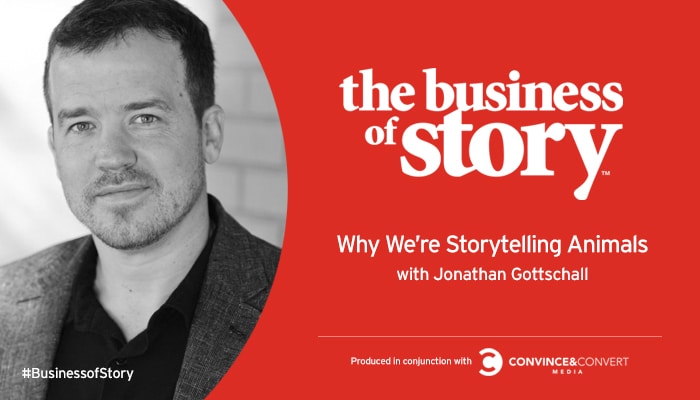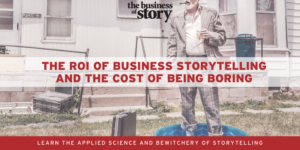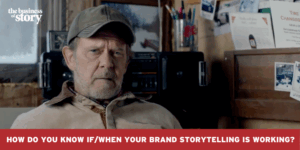I showed this one-minute video in one of our storytelling workshops and asked the room what they saw.
The woman sitting directly to my left turned to the other 12 workshop participants and said, “Obviously, it’s Romeo and Juliet.”
Everyone looked at each other and shrugged.
I turned next to the gentlemen sitting to her left and asked him what he saw. He matter-of-factly said, “I saw a sperm trying to impregnate an egg.”
The room erupted in half laughter and half “I can’t believe he just said that” facial twitches.
When I told Luis, our VP Creative Director, about the incident, he said, “Great, now your little Rorschach video took your audience from Shakespeare to Porky’s in one fell swoop.”
Such is the power of storytelling, especially the ones we make up in our heads.
I use this video from the 1944 Heider Simmel study to demonstrate to my Story Cycle workshop audiences that storytelling is not a gimmick. Watch the video, just over a minute, and you’ll see nothing but shapes moving around on the screen. No dialogue. No soundtrack. No faces. When viewed for the first time, your brain goes into full processing trying to make meaning out of the action. It can’t help itself.
When subjects are asked what they saw, they will respond with the most amazing stories. In actuality, there is no story featured in the video.
This is just one proof point that we’re hardwired to create meaning out of the meaningless: to tell ourselves stories to make sense of the chaos around us.
Stop Reading and Watch the Video Now
What story did you see in the floating geometrical shapes? Love triangle? Domestic violence? Bullying? Butterfly catching?
Yes, I once had a librarian say she saw kids catching butterflies.
I learned about the Heider Simmel study from Jonathan Gottschall in his extraordinary book, The Storytelling Animal: How Stories Make Us Human.
Jonathan is our guest on Business of Story podcast this week. I can’t tell you how often I’ve used materials from his book to help business leaders appreciate how persuasive stories are, especially to our subconscious.
This is important because our conscious mind is simply the P.R. department for our subconscious mind where all of the real decisions are being made. Storytelling seamlessly connects us to the subconscious.
All I have to do is the get the Doubting Thomases to watch the video, and tell me what they saw (what their minds automatically made up for them), and they begin to understand that, right or wrong, we’re constantly making up stories.
None of us wants the wrong brand story to be told. That’s why we use proven story structure that captures the attention of the conscious mind, and delights the subconscious. If you are in charge of crafting and telling stories for your workforce, brand, nonprofit, or client, then it is imperative that you share clear, concise and compelling stories so that your audiences don’t make up their own about you.
Learn how by listening to Jonathan today.
In the end, you don’t own your brand story, your customers do. And you want them to own the right story. Right?
Epilogue: Jonathan Gottschall just released another amazing book, Professor in the Cage: Why Men Fight and Why We Like to Watch. The Washington Post called it, “Fight Club, but for English teachers.” In our podcast, Gottschall talks about starting mixed martial arts training at 38 and having his one and only fight three years later. This is how he immerses himself in his fascinating subjects. He’s not ringside. He’s taking the pounding.
Great book, Brilliant storyteller. We’re lucky to have him on our show.











